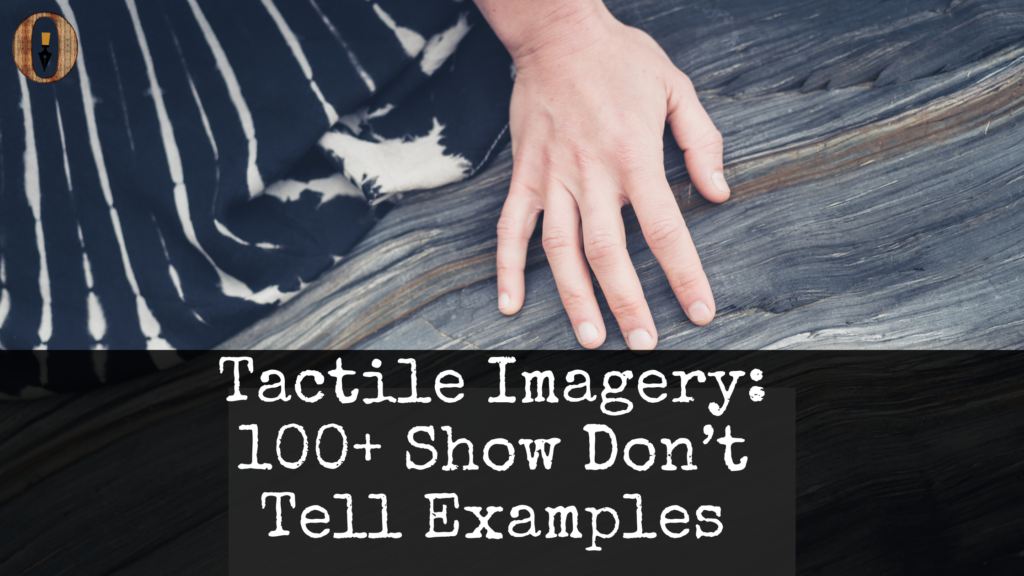‘Show, don’t tell’ isn’t just a phrase to embellish your writing. It’s a way for readers to connect with your characters and the story. It’s a way for the readers to be around them and in the midst of the story. It’s a way for the readers to live the story your characters are living and you lived as the author of it.
Now, we often find ourselves in the dilemma of how to show more and tell less, or at least maintain a balance between the two. Each writer writes to improve and weave the stories for the world to get lost into and come out as if it lived them.
Sensory Imagery in Literature
Well, this is done through ‘Sensory Imagery’. Sensory imagery works by engaging a reader’s five senses (sight, smell, sound, taste, and feeling) with concrete details that allows them to create vivid imagery of what is happening.

Through a combination of sensory imageries, authors arm the readers with information that gives them the pleasure of arriving at their own judgements through perceptual clues.
If you’re one of them, bookmark this article that has over 300+ Show Don’t Tell Examples. These sentences are completely at your disposal. You can use them in your writing as they are. (Just put us in attributions, it’ll make us happy).
Before I begin, understand that there are 7 different types of imagery in literature:
Types of Imagery in Literature

- Visual
- Auditory
- Olfactory
- Gustatory
- Tactile
- Kinesthetic
- Organic
But in this article, we’ll only focus on Tactile Imagery.
Tactile Imagery in Literature
The tactile imagery appeals to our sense of touch by describing something the protagonist feels on their body. It may include the feel of different physical sensations, temperatures, and textures.

What your characters feel, how they touch, how something touches them, a reader feels these things via your writing. When you put in the imagery for touch and tangibility, you use Tactile Imagery. Essentially, the reader ought to feel those things that your character feels. This is where tactile imagery comes handy. I am providing you with a few example Adjectives describe touch, skin, pattern and texture:
Tactile Imagery Examples in Literature
- Abrasive
- Corrosive
- Coarse
- Sharp
- Pointed
- Edged
- Curved
- Barbed
- Bald
- Hairy
- Sticky
- Silky
- Smooth
- Cold
- Hot
- Lukewarm
- Chunky
- Patchy
- Rough
- Damp/ Wet
- Dry
- Chapped
- Slippery
- Damaged
- Blistered
- Crocheted
- Cushioned
- Clammy
- Dented
- Plastic
- Rubbery
- Doughy
- Blunt
- Bulging
- Engraved
- Embossed
- Even
- Watery
- Gooey
- Mushy
- Slushy
- Sloppy
- Spongey
- Pulpy
- Greasy
- Glossy
- Grainy
- Gravelly
- Grimy
- Hollow
- Frozen
- Rocky
- Stony
- Inflated
- Deflated
- Itchy
- Cottony
- Woolly
- Metallic
- Papery
- Crispy
- Crunchy
- Brittle
- Crumbly
- Firm
- Jagged
- Spiked
- Serrated
- Toothed
- Oily
- Pleated
- Padded
- Patterned
- Polished
- Holey
- Moist
- Sandy
- Flimsy
- Chiffony
- Gossamery
- Gauzy
- Delicate
- Thin
- Thick
- Light
- Transparent
- Opaque
- Translucent
- Buttery
- Meaty
- Fleshy
- Burly
- Muscular
- Sturdy
- Rigid
- Frigid
- Friable
- Soapy
- Sodden
- Velvety
- Wrinkled
- Wavy
- Marshy
- Miry
- Swampy
- Hard
- Weedy
- Soggy
- Withered
- Feathery
- Thorny
- Spinous
- Steely
- Dense
For nouns, you can use any object that goes best with any of the adjectives provided earlier.
Tactile Imagery Sentence Examples:
- As I tumbled down the hill, the loose rocks raced alongside me, pricking my hands and face like a hundred tiny knives.
- She started to sweat so feverishly that, when she rose from the leather couch, her slippery skin stuck to it like a Command Strip
Now that you have a thorough understanding of literary elements to use in your own writing, it’s time to put your skills to use! The only way to do this is to practice and actually sit down to write.
Before you leave, check out these 100+ examples on Organic imagery to empower your ‘Show don’t tell game.’
